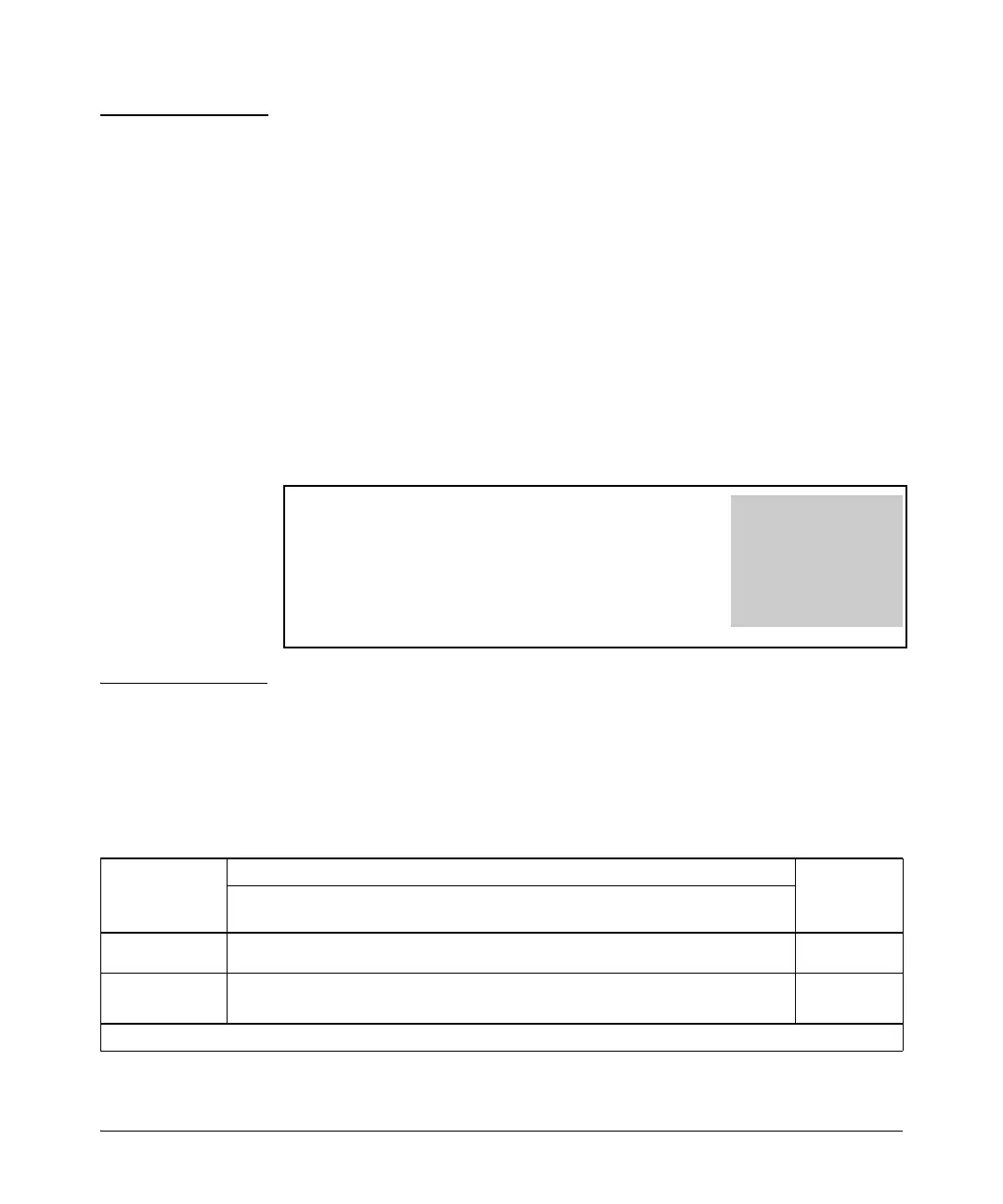5-19
Quality of Service: Managing Bandwidth More Effectively
Globally-Configured QoS
No Override By default, the show qos output for following global QoS classifiers may
display No-override for QoS marking: IP Precedence, IP Diffserv, Layer-3
Protocol, VLAN ID, and Source-port (see Figure 5-3). No-override means that
the global QoS policy used to mark matching packets does not assign an 802.1p
value.
■ IP packets received through a VLAN-tagged port are managed using the
802.1p priority they carry in the 802.1Q field in their headers.
■ VLAN-tagged packets received through an untagged port are handled by
the switch with “normal” priority.
For example, Figure 5-3 below shows the global QoS configurations on the
switch that are configured with the VLAN ID classifier. Note that non-default
802.1p priorities have been configured for VLAN IDs 22 and 33; packets
received on VLAN 1 are managed with the default settings, as described in the
two bulleted items above.
Figure 5-3. Example of the Show QoS Command Output
Global QoS Restrictions
Table 5-3 shows the packet types supported by different global QoS classifiers
and DSCP marking.
Table 5-6. Restrictions for Global QoS Support
HP Switch(config)# show qos vlan-priority
VLAN priorities
VLAN ID Apply rule | DSCP Priority
------- ----------- + ------ -----------
1 No-override | No-override
22 Priority | 0
33 DSCP | 000010 6
This output shows that
VLAN 1 is in the default
state, while VLANs 22
and 33 have been
configured for 802.1p
and DSCP Policy
priorities respectively.
Type of Packets
Supported
Global QoS Classifiers DSCP
Overwrite
(Re-Marking)
TCP/UDP IP Device IP Type-of-
Service
Layer 3
Protocol
VLAN ID Source
Port
Incoming
802.1p
IP packets (IPv4
and IPv6
1
) only
Yes Yes Yes No No No No Yes
Layer-2 SAP
encapsulation
Yes Yes Yes Yes Yes Yes Yes Yes
1
Globally-configured QoS supports IPv6 packets starting in release K.14.01.

